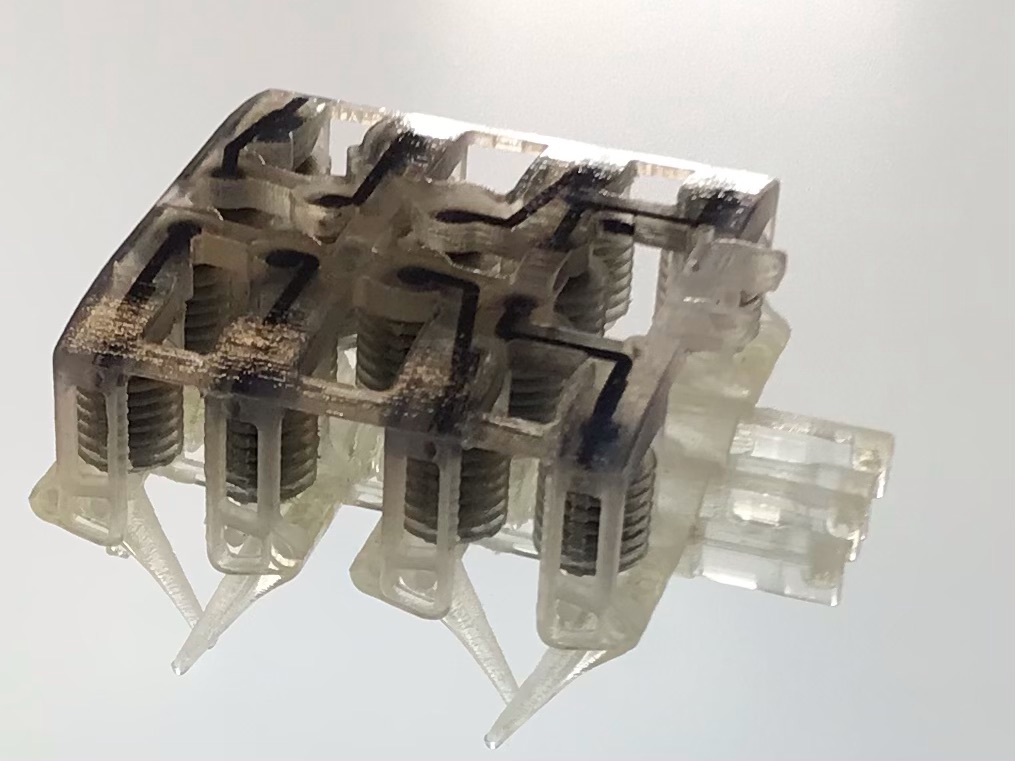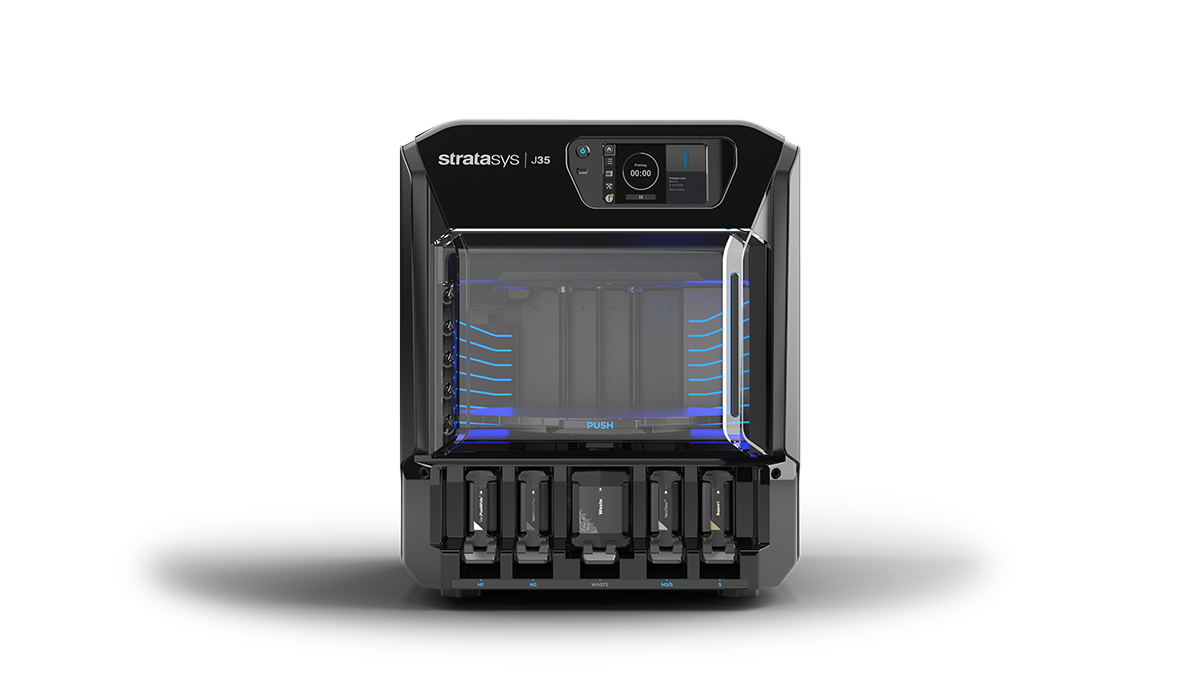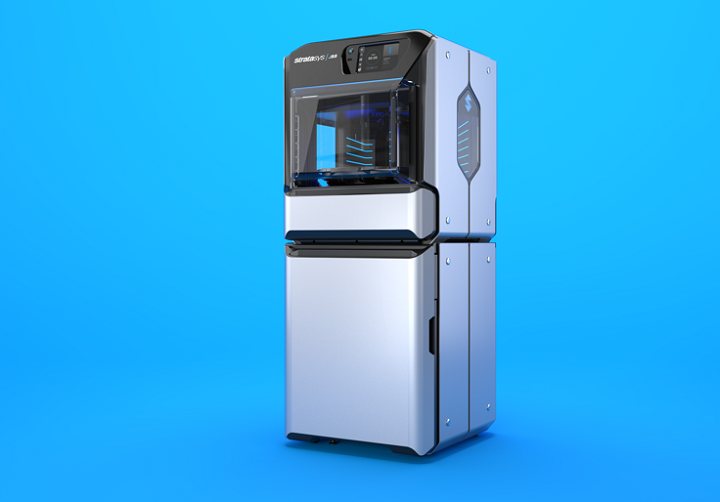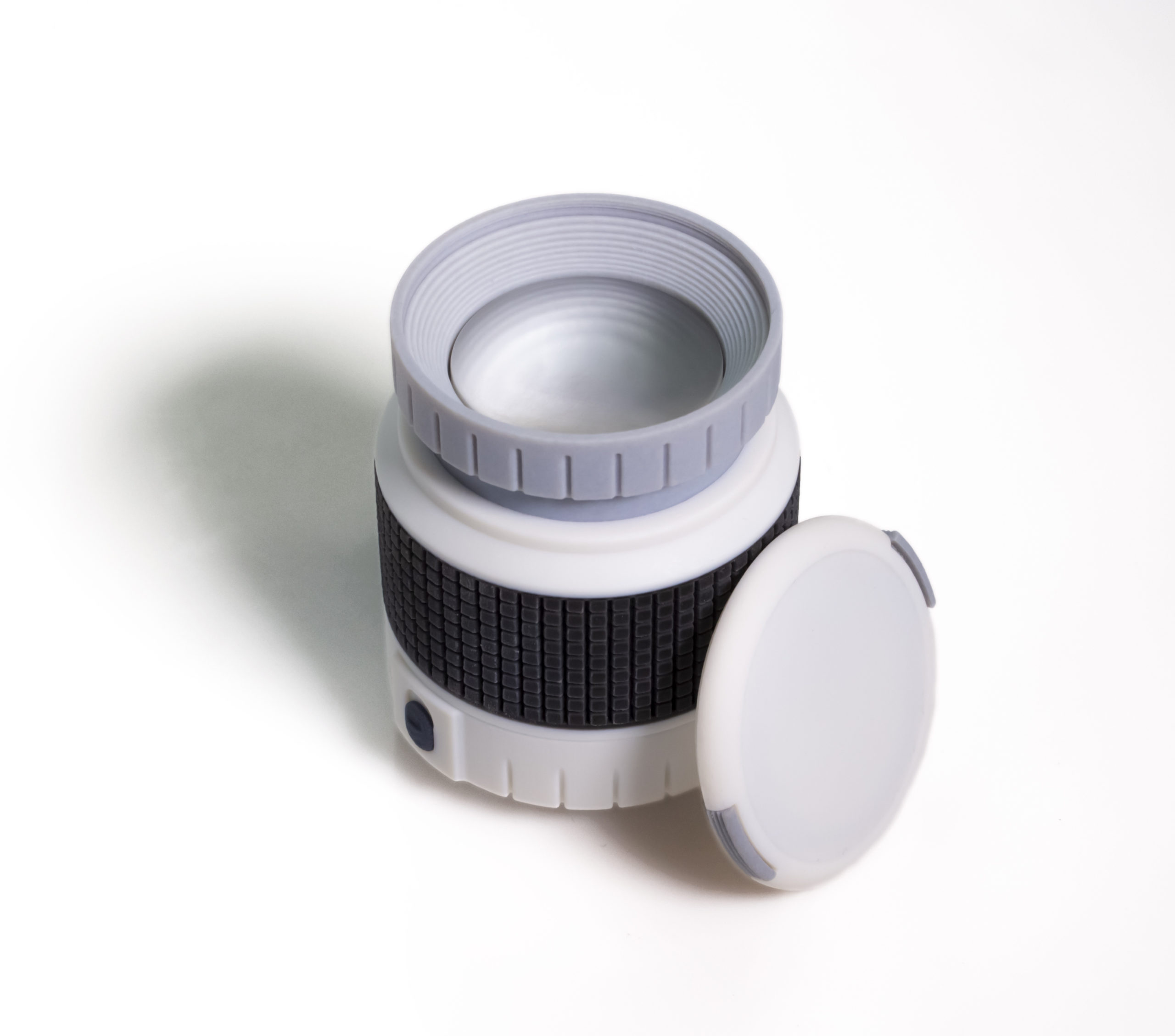Stratasys (NASDAQ: SSYS) has been extensively building out its PolyJet line, delivering a series of new 3D printers for just about every vertical you can imagine. Now, the firm has introduced its lowest cost, multi-material PolyJet 3D printer, the J35 Pro, as well as an upgrade to the J55 released last year called the J55 Prime, allowing for a wider variety of colors, textures and materials. We were able to speak to Barry Diener, PolyJet commercial leader at Stratasys, about the new systems, as well as new software packages directed at researchers and packaging companies.
With the J35 Pro, Stratasys is taking the compact, office-friendly architecture of the J55 released last year and introducing it to a broader audience at a new price point. For this reason, Diener called it the “cousin of the J55”. Like its relative, it uses the same rotational printing platform, maximizing print reliability and offering greater output in a small footprint.
The J35 Pro is an engineering and design machine that can 3D print one support and up to three model materials simultaneously, including the impressively translucent Vero UltraClear. Stratasys suggests such applications as “over-molding, filling simulation and printing in full grey scale.” With a variety of textures and high detail possible, the J35 Pro can be used to test form and function during pre-production. To manage prints, users can rely on GrabCAD Print, which has the ability to import native CAD and 3MF files.
Crucially for those who’ve wanted to 3D print with multiple materials, but couldn’t justify the investment in previous PolyJet machines, the J35 will sell for less than $50,000. This is similar to the Connex3, which allowed for the printing of three model materials and one support material, but sold for a higher price. Additionally, with the ProAero system (also on the J55), this machine can work in an office without the need for extensive venting.
One of the main methods used to reduce the expense of the J35 was the elimination of the material cabinet. The materials go directly into the front of the machine. To compensate for the lack of cabinet while printing three materials, the software for the printer can be set to pause when a new cartridge needs to be added. It is essentially a multi-material desktop 3D printer with a robust build area of 182in2 and maximum height of 6.22. However, no desktop extrusion machine can achieve 18.75-micron layer thickness and combine print with such unique Stratasys materials as:
- VeroUltra WhiteS, BlackS, and ClearS
- Low-cost Draft Grey
- Elastico (rubber-like) Clear and Black
- Digital ABS RGD531 (Ivory) and RGD515+
- Biocompatible Vero ContactClear
- SUP710 support material
- Cleanser material
In addition to the J35, Stratasys announced the J55 Prime, an upgrade to the J55 released in April 2020. Diener described the Prime has having more “horse power” than its predecessor in that it can use new materials previously unavailable to the J55. This includes Elastico, Digital ABS, Vero ContactClear, and VeroUltra opaque colors, which introduce a new degree of realism to PolyJet products.
What makes these materials possible on the J55 Prime, in addition to a new licensing scheme, is new formulations of the photopolymers so that they can be cured with the LED lights that drive the J55 print engine. In the past, some of these resins were only available with the UV curing technology found in the J8 series. The Prime is the exact same price as the original J55, $99,000, and existing customers will be able to take advantage of the materials as well.
As you’ll note, there is an important distinction between the J35 and J55: full color. Diener was able to explain the company’s reason for such a machine.
“One of the things you’ll find is that moving to full-color, high-fidelity 3D printing, is a process that has evolved over time. It has to do with continuous workflow improvement which has been a focus of Stratasys” Diener said.
This, of course, makes a lot of sense, given the fact that even achieving the exact model you want on a simple desktop extrusion machine requires the proper model, print prep, and dialing in the print parameters. As an entry point to PolyJet, then, the J35 introduces users to multi-material 3D printing process at a lower cost. Additionally, Diener pointed out that there is a large market for using the technology for prototyping:
“If we look back at our install base of customers over time, you’ll find that most of them are typically using them for early-stage prototyping and some functional prototyping. The bar to get into multi-material 3D printing has been very high in the past, right? You’re closer to that $100,000 range. The sub $50K range brings the bar a lot lower for customers to get into multi-material printing. We’re extremely bullish on this product, especially at the price point. This allows customers and prospects to jump in to really the core capabilities of PolyJet technology, which is: one, multi-material 3D printing, and, two is, is high-fidelity color, which you can get in the J55 Prime.”
One example of potential J35 users could be those currently relying on several stereolithography or digital light processing machines to 3D print parts in different materials, respectively. Rather than print white parts on one, black on another, and great on another, a single J35 could 3D print three different components in three different materials all in a single build, reducing labor and increasing throughput. This is, of course, in addition to those wishing to 3D print multi-material items that combine flexible, hard and translucent resins in a single print.
In addition to the new machines, of a Research Package License for advanced users and Packaging Kit that includes both software and material enhancements to dive into high fidelity appearance models in packaging. Anyone who has visited a Stratasys booth is likely impressed with the vivid colors and multiple materials of PolyJet prints. Working with software developer KeyShot, Stratasys has developed a method for converting models made in the powerful rendering tool into 3D printable 3MF files. The results are impressive. The image of a beer bottle below demonstrates the ability to combine KeyShot’s rendering capabilities with PolyJet to produce an ultra-realistic model, glass transparency, condensation, and all. To enable such design possibilities, GrabCAD now has some automated features, including the white backing needed for labels.

The new opaque colors extend realism to even more prototyping applications, such as bottle labels, which can be combined with VeroUltra Clear material for glass-like clarity
The new research package license is meant to provide greater control over PolyJet 3D printing for R&D purposes. The technology has already been used in this capacity for some time, with researchers typically hacking PolyJet 3D printers to achieve the goals of their projects. Stratasys examined the ways its machines were used for these purposes and designed software features to facilitate this process.
For instance, those who might insert a non-printed object into a 3D printed part can use the GrabCad Parameter Editor to pause a print and embed the item before finishing the task. Other functions include designing hydraulic channels through the visualization of support materials, 3D printing liquids and air to create moving parts and actuators, printing delicate parts through the use of pause and resume features, among other experimentation abilities.

Internal channels for soft robotics made possible through new software options. Image courtesy of Stratasys.
I reached out to Joris Peels, vice president of consulting at SmarTech Analysis, knowing that he has had some thoughts on the company’s strategy of targeting a multitude of markets with its technology. He had this to say:
“PolyJet is a powerful technology especially for high definition prototypes that have to look good. For the J35, you’d probably still need a water jetting station to remove supports, but a compact and less expensive PolyJet machine is sure to find a market among designers and product development departments.
“Stratasys continues to expand its offering in an ever-more granular way. In effect, it is taking its existing technologies and packaging them for many different customer needs. This is a smart approach that will see them penetrate more markets and wring more margin from specific customers. It does mean that an ever-larger proportion of Stratasys’ R&D resources will be tied up in maintaining and developing a wide assortment of products. In effect, rather than fundamentally develop its core technologies, it will be spending more money focusing on machines and offerings for every conceivable application. In effect, the train itself will be slowing down but the wagons will be ever more luxurious.”
While I was concerned about fragmenting its PolyJet portfolio with a wide array of systems for different verticals, Diener said that Stratasys is actually consolidating its PolyJet line with regard to prototyping.
The J35 Pro is available for orders today and is expected to begin shipping in September, while the J55 Prime is expected to be released in late July. The new GrabCAD tools for packaging are now available, but the R&D software license will not be available until September.
Subscribe to Our Email Newsletter
Stay up-to-date on all the latest news from the 3D printing industry and receive information and offers from third party vendors.
You May Also Like
Precision at the Microscale: UK Researchers Advance Medical Devices with BMF’s 3D Printing Tech
University of Nottingham researchers are using Boston Micro Fabrication‘s (BMF) 3D printing technology to develop medical devices that improve compatibility with human tissue. Funded by a UK grant, this project...
GaeaStar and Verve Coffee Roasters Start Pilot Production of Sustainable 3D Printed Coffee Cups
Following a 2022 debut in Germany, GaeaStar, a startup based in San Francisco and Berlin, has begun US pilot production of its sustainable, disposable clay cups and bowls made with...
Meltio and Accufacture Unveil Robotic Metal 3D Printer Made in the US
Meltio has partnered with Michigan-based robotics firm Accufacture to introduce Alchemist 1, a robotic cell designed for wire-laser metal 3D printing made in the US. This new system represents a...
WASP Highlights Advances in Healthcare 3D Printing at Italy’s Exposanità 2024
WASP takes center stage at Italy’s leading healthcare expo, Exposanità 2024, demonstrating the transformative impact of its advanced 3D printing technologies on the medical sector. Known for its line of...






































